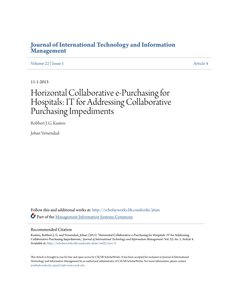Landside operations in air cargo terminals consist of many freight forwarders (FFWs) delivering and picking up cargo at the capacity-constrained loading docks at the airport's ground handlers' (GHs) facilities. To improve the operations of the terminal and take advantage of their geographical proximity a small set of FFWs can build a coalition to consolidate stochastically-arriving shipments and share truck fleet capacity while other FFWs continue bringing cargo to the terminal in a non-cooperative manner. Results from a detailed discrete-event simulation model of the cargo landside operations in Amsterdam Aiport showed that all operational policies had trade-offs in terms of the average shipment cycle time of coalition FFWs, the average shipment cycle time of non-coalition FFWs, and the total distance traveled by the coalition fleet, suggesting that horizontal cooperation in this context was not always beneficial, contrary to what previous studies on horizontal cooperation have found. Since dock capacity constitutes a significant constraint on operations in air cargo hubs, this paper also investigates the effect of dock capacity utilization and horizontal cooperation on the performance of consolidation policies implemented by the coalition. Thus, we built a general model of the air cargo terminal to analyze the effects caused by dock capacity utilization without the added complexity of landside operations at Amsterdam Airport to investigate whether the results hold for more general scenarios. Results from the general simulation model suggest that, in scenarios where dock and truck capacity become serious constraints, the average shipment cycle times of non-coalition FFWs are reduced at the expense of an increase in the cycle times of FFWs who constitute the coalition. A good balance among all the performance measures considered in this study is reached by following a policy that takes advantage of consolidating shipments based on individual visits to GH.
DOCUMENT

This article addresses drivers and partner features in vertical or horizontal cooperation. A survey is used to assess their impact and to evaluate whether respondents give significantly different scores to comparable influencing factors depending on the type of cooperation. The results show that internal stakeholder support and investments needed for collaboration turn out to be more critical in the case of horizontal collaboration. Innovation potential of the partner features and the fit between the cooperating organizations are judged as more important partner features in the case of horizontal cooperation.
DOCUMENT
Horizontal collaborative purchasing (HCP) has often been cited as a way for hospitals to address the challenges of the rising healthcare costs. However, hospitals do not seem to utilize horizontal collaborative purchasing on any large scale, and recent initiatives have had mixed results. Focusing on Dutch hospitals, in this paper we present major impediments for collaborative purchasing, resulting in a first component of our proposed electronic horizontal collaborative purchasing model for hospitals; as a second component it contains a collaborative purchasing typology. A first validation round with hospital purchasing professionals, described separately in Kusters and Versendaal (2011), confirmed four applicable purchasing types and fourteen salient collaborative purchasing impediments. The model is operationalized by including possible information technology (IT) solutions that address the specific fourteen impediments. This model is validated through methodological triangulation of four different validation techniques. We conclude that IT has the potential to support, or overcome, the impediments of HCP. The validation also reveals the need to distinguish between more processrelated, as opposed to social-related, obstacles; the immediate potential for IT solutions is greater for the process-related impediments. Ultimately, we conclude that the collaborative epurchasing model (e-HCP) and implementation roadmap can be used by healthcare consortia, branche organizations, partnering healthcare institutes and multi-site healthcare institutes as a means to help identifying strategies to initiate, manage and evaluate collaborative purchasing practices
DOCUMENT

The application of sensors in water technology is a crucial step to provide broader, more efficient and circular systems. Among the different technologies used in this field, ultrasound-based systems are widely used, basically to generate energy peaks for cell lysis and particle separation. In this work, we propose the adaptation of an ultrasound system to monitor the concentration of solid particles in wastewater treatment plants settlers as well as to indicate sludge level (real time). A similar sensor was developed and tested in another project which operated successfully at solids concentration up to 1% in UASB reactors. Such measurements are nowadays obtained via time-consuming physical (solids) analysis, which can compromise the efficiency of the settlers and the quality of the effluent. The present project proposes an improved version of the sensor, which will combine solids concentration monitoring and sludge level detection. The defined targets have the intention to make a sensor with a much broader range of applications, been suitable not only for UASB reactors but also to settler and aerobic tanks. The project is a cooperation between the Water Technology lectoraat of NHL Stenden University of Applied Sciences, two SME’s - YNOVIO B.V. and Lamp-ion B.V. - and the INCT group (Brazil). If proven feasible, the concept can generate a big business market to the involved Dutch partners as well as favor the automation of WWTP in the Netherlands, Brazil and around the world.